Are you feeling lost in a maze of network cable types and shielding options? Don’t worry; we’ve got your back! This guide will unravel the mysteries of shielded network cables, including U/UTP, F/UTP, S/UTP, SF/UTP, U/FTP, F/FTP, and S/FTP. Get ready to dive into network cable shielding like a pro!
U/UTP: UNSHIELDED TWISTED PAIRS
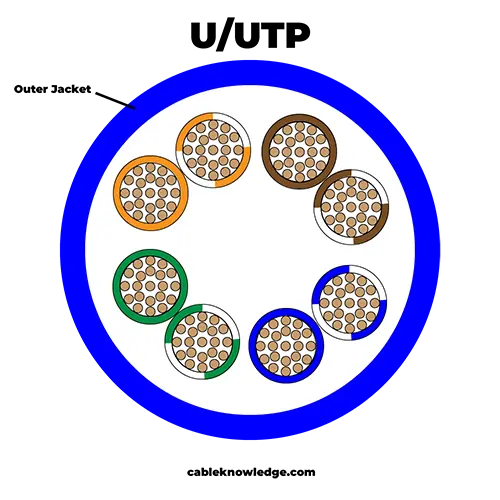
Let’s start with U/UTP cables, also known as unshielded twisted pairs. These cables are the foundation of many network setups, featuring multiple twisted pairs of insulated copper wires.
The beauty of U/UTP lies in its simplicity and cost-effectiveness. While lacking shielding, the twisted pairs effectively reduce electromagnetic interference (EMI) and crosstalk.
U/UTP cables are commonly used for Ethernet connections in homes, small offices, and other environments where EMI is not a significant concern.
Although they may be more susceptible to interference than shielded options, U/UTP cables offer reliable performance for basic networking needs.
F/UTP: FOIL SHIELD WITH UNSHIELDED TWISTED PAIRS
F/UTP is a popular choice for shielded network cables in many applications. The foil shield protects against electromagnetic interference, ensuring reliable data transmission.
Combining the foil shield with unshielded twisted pairs offers a balance between cost-effectiveness and performance. This cable type is commonly used in environments where moderate shielding is sufficient.
F/UTP cables are versatile and can be deployed in various settings, from small offices to industrial facilities. Their design helps reduce signal degradation caused by external factors like electrical noise or crosstalk.
By choosing F/UTP cables, you can ensure that your network infrastructure remains secure and stable. Whether setting up a new network or upgrading an existing one, consider the benefits of using F/UTP for your connectivity needs.
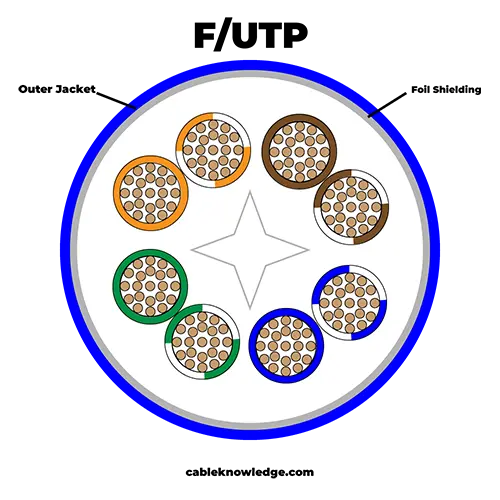
S/UTP: BRAID SHIELD WITH UNSHIELDED TWISTED PAIRS
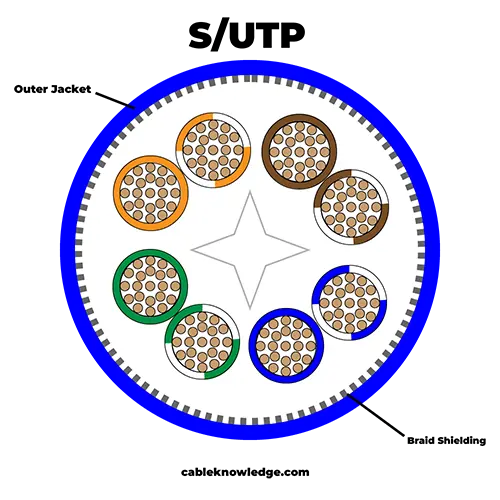
Regarding shielded network cables, the S/UTP type stands out with its unique design. Combining a braid shield with unshielded twisted pairs, this cable offers enhanced protection against electromagnetic interference.
The braided shield wrapped around the twisted pairs provides an additional layer of defense, making S/UTP cables ideal for environments with high levels of electrical noise. This shielding construction helps maintain signal integrity and reduces the risk of data loss or disruptions during transmission.
Combining braiding and unshielded twisted pairs in S/UTP cables balances protection and flexibility. It allows for efficient data transfer while minimizing the impact of external interference sources on network performance.
Overall, S/UTP cables are reliable for applications where shielding is essential to ensure optimal connectivity and signal quality.
SF/UTP: BRAID AND FOIL SHIELD WITH UNSHIELDED TWISTED PAIRS
When it comes to shielded network cables, SF/UTP is a game-changer. This type combines the best of both worlds—braided and foil shielding and unshielded twisted pairs. The braid shield protects against electromagnetic interference, while the foil shield enhances overall performance.
The combination of these shielding types makes SF/UTP ideal for environments with high levels of interference or noise. It ensures a stable connection and reliable data transmission even in challenging conditions. Whether dealing with industrial machinery or busy office networks, SF/UTP cables can handle it all.
By incorporating both braid and foil shields, SF/UTP offers superior signal integrity and effectively reduces crosstalk. It’s a versatile solution that caters to various networking needs without compromising performance. With SF/UTP cables, you can trust that your data will be secure and your connections strong.
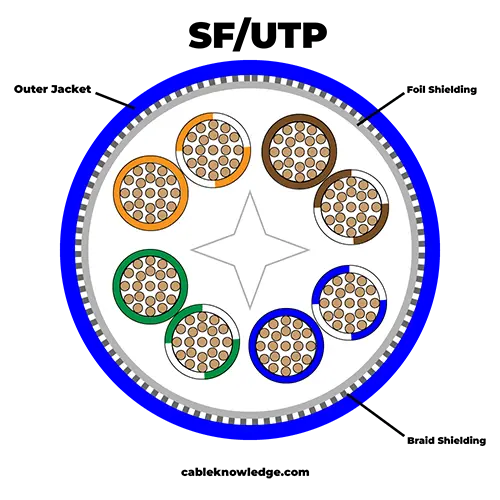
U/FTP: UNSHIELDED WITH FOIL SHIELDED TWISTED PAIRS
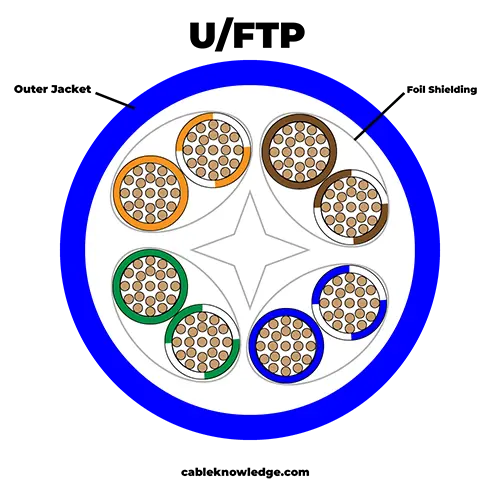
The U/FTP type stands out for its unique design. The “U” in U/FTP indicates that the cable is unshielded, while the “FTP” signifies that each twisted pair within the cable is individually foil-shielded.
This combination offers a balance between cost-effectiveness and performance. Having each twisted pair shielded with foil but leaving the overall cable unshielded protects against electromagnetic interference while maintaining flexibility and ease of installation.
The foil shielding around each pair helps prevent crosstalk and signal degradation, especially in environments with high levels of interference. This makes U/FTP cables ideal for use where electromagnetic interference is a concern, but a fully shielded cable may not be necessary.
Overall, U/FTP cables are a versatile option that balances shielding effectiveness and practicality for various networking applications.
F/FTP: FOIL SHIELD WITH FOIL SHIELDED TWISTED PAIRS
Are you looking for network cables that offer superior protection against electromagnetic interference? Look no further than F/FTP cables! These cables combine the shielding benefits of both foil and twisted pairs to ensure optimal performance in noisy environments.
The foil shield provides a barrier against external interference, while each twisted pair is individually wrapped in its foil shield. This double-layered protection minimizes crosstalk and signal degradation, making F/FTP cables ideal for high-speed data transmission.
Whether setting up a home network or a large-scale IT infrastructure, investing in F/FTP cables can provide peace of mind, knowing your data transmissions are secure and reliable. Say goodbye to connectivity issues caused by electromagnetic interference with these advanced shielded network cables!
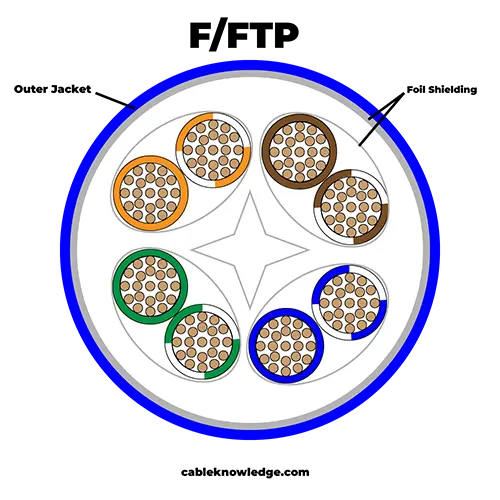
S/FTP: BRAID SHIELD WITH FOIL SHIELDED TWISTED PAIRS
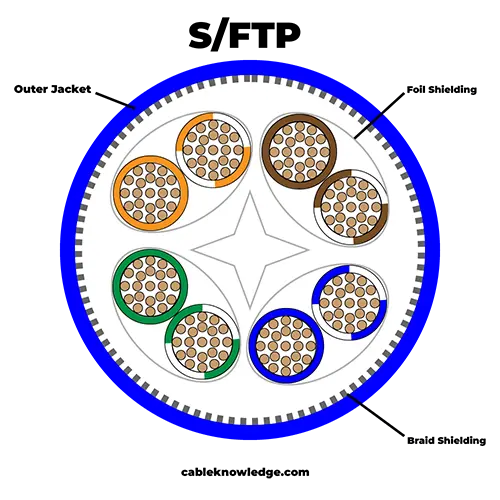
S/FTP is a popular choice, it stands for braided shielding combined with foil-shielded twisted pairs. The combination of these shielding types provides superior protection against electromagnetic interference.
The braided shield in S/FTP cables consists of woven strands of copper or aluminum, adding an extra layer of defense against external noise and interference. Each individual twisted pair within the cable is also wrapped in a foil shield. This dual-layer shielding ensures minimal signal degradation over long distances.
In environments with high levels of electromagnetic interference, such as data centers or industrial settings, S/FTP cables excel at maintaining signal integrity and reliability. Whether you’re dealing with high-speed data transmission or voice communication systems, investing in S/FTP cables can help ensure smooth and uninterrupted performance.
Overall, S/FTP cables offer robust protection for your network infrastructure, making them a valuable asset for businesses seeking reliable connectivity solutions.
Conclusion
Whether you opt for U/UTP, F/UTP, S/UTP, SF/UTP, U/FTP, F/FTP, or S/FTP cables will depend on factors such as budget constraints, interference levels in your area and the overall requirements of your networking setup. You can mitigate electromagnetic interference and maintain a stable connection by choosing the right cable shielding type for your needs.
Remember to assess your specific requirements carefully before making a decision. Investing in high-quality shielded network cables can significantly improve the performance and longevity of your network infrastructure. Choose wisely to ensure seamless connectivity and data transmission within your organization or home network setup.

